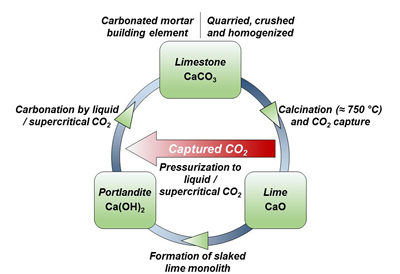Targeting lower net carbon dioxide emissions in portland cement milling, University of California, Los Angeles researchers propose introduction of calcium hydroxide at the calcination phase, when high temperatures split limestone raw feed into CO2 gas and calcium oxide. Lab-scale tests in their National Science Foundation-backed investigation indicate the potential to sequester CO2 and recreate limestone in a continuous loop.
Read MoreTag: reduced-carbon cement production
Researchers eye reverse calcination for reduced-carbon cement production
Sources: University of California, Los Angles; CP staff
Targeting lower net carbon dioxide emissions in portland cement milling, University of California, Los Angeles researchers propose introduction of calcium hydroxide, or hydrated lime, at the calcination phase, when high temperatures split limestone raw feed into CO2 gas and calcium oxide. Lab-scale tests in their National Science Foundation-backed investigation indicate the potential to sequester CO2 and recreate limestone in a continuous loop.
Read More